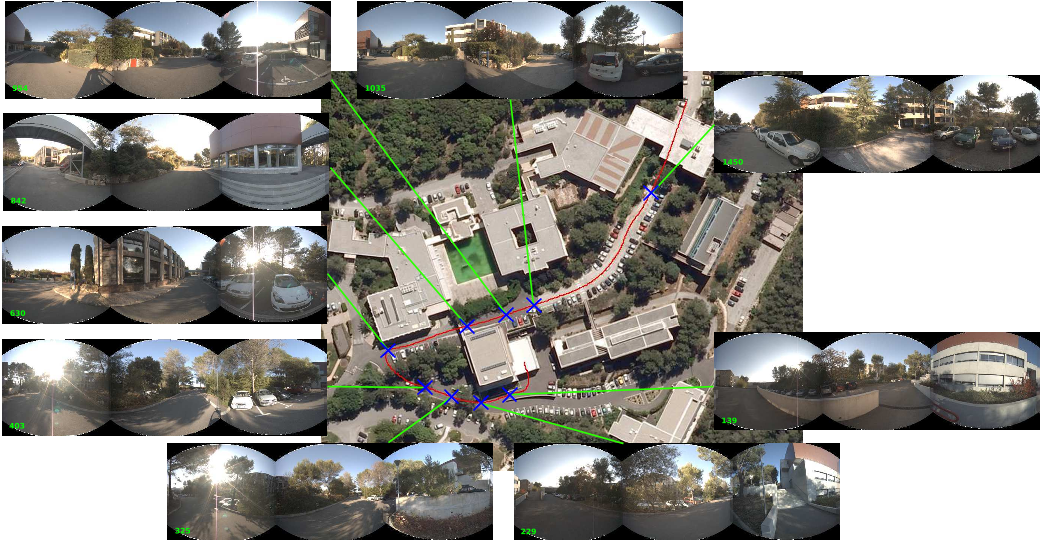




Did you find this useful? Give us your feedback











933 citations
...[54] combined Kalman filtering with the Neyman–Pearson Lemma....
[...]
179 citations
14 citations
7 citations
...1: Typical layers of a mapping system, courtesy of [Chapoulie et al. 2013]...
[...]
...2012][Chapoulie et al. 2013], provide a topological segmentation based on change detection in the structural properties (textures, appearance frequency, orientation of straight lines, curvatures, repeated patterns) of the scene during navigation....
[...]
2 citations
...Environment mapping or model building is the process of constructing a one-to-one or many-to-one relationships between the 3D points in the real physical space and points in the digital space [11][36][35]....
[...]
6,882 citations
...Since it has been introduced [15], GIST has been used multiple time in image-based learning algorithms and in robotics for place recognition and loop closure detection [13] or for indoor region classification [18]....
[...]
285 citations
...This level, with a higher degree of abstraction, allows us to specify contextbased navigation tasks in terms of queries [7]....
[...]
221 citations
...In computer graphics, only three bands are used due to an exponential attenuation in bands of higher frequencies [8]....
[...]
...Further mathematical details about spherical harmonics can be found in [2], [1], [8]....
[...]
192 citations
...Topological representation captures the environment accessibility properties in a graph structure and provides a first level of abstraction allowing complex navigation tasks in large scale environments [21]....
[...]
154 citations
...Reliable representations able to capture metric, topological and semantic aspects of the scene have to be built for supporting path planing and real time motion control algorithms [14]....
[...]
For future work, the authors plan to improve their algorithm robustness to illumination condition following [ 6 ] and its rotation independence. De-rotation mechanism can be applied as rotations can be estimated from spectra.
The segmentation algorithm relies on an efficient change-point detection based on multi-hypothesis testing and allowing constant time computation.
In a longer term, the segmentation algorithm could be coupled with a loop closure detection algorithm in orderto improve change-point localization stability and with a semantic level by adding place classification and labelling.
Pml corresponds to the associated Legendre polynomials with x ∈ [−1, 1] such that:Pml (x) = (−1)m(1− x2)m/22ll!dl+mdxl+m (x2 − 1)l (3)Every function defined on the sphere surface can be decomposed in a sum of spherical harmonics as follows:f = ∑l∈N∑|m|≤lfml Y m l (4)The fml coefficients are obtained from a function f by:fml =∫η∈S2 f(η)Y ml (η)dη (5)If fml = 0 for all l > L, f is said to be band limited with a bandwidth L. The coefficients set fml is called the spherical Fourier transform or the spectrum of f .
As descriptors are based on appearance frequencies, when the robot approaches walls, frequencies become lower and a new topological place is defined.
the spherical harmonics spectrum code is highly parallelizable and might take great advantage of a C/C++ parallel implementation.
Considering the density function estimation constraints aforementioned, the sliding window has to be sufficiently large for a correct estimation.
Let’s assume the density functions under each hypothesis, i.e. f0 and f1, follow a multivariate normal distribution:f0 ∼ N (µ0,Σ0 f1 ∼ N (µ1,Σ1) (10)As each hypothesis is characteristic of one topological place, density functions characterize the structural parameters of topological places.
Spherical harmonics being a frequency description of the spherical image, the authors propose to directly use the spectrum as a structure descriptor.
Spherical harmonics spectrum computation requires 290ms using the implementation described above (the sphere is sampled with 62500 samples uniformly distributed).
Frequency information corresponds to band number l and orientation information to parameter m (the higher l is, the higher the frequency is, see fig.